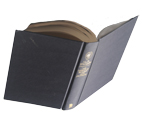Kage Baker’s excellent fantasy-of-manners, The Anvil of the World, begins: ‘Troon, the golden city, sat within high walls on a plain a thousand miles wide. The plain was golden with barley.’ This is nice, clear writing with strong imagery we can ‘see’ in the mind. However as the description continues we learn that Troon inhabitants all suffer from emphysema from harvest dust, and that ‘the social event of the year’ is the Festival of Respiratory Masks.
Building droll humour into her description over several sentences allows Baker to make full use of setting to introduce the novel’s tone and themes (a certain blinkeredness of thinking depicted as the tendency here to celebrate one’s own disease). Meanwhile the sharpness of Baker’s imagery and the deftness of her language (short and sweet; nothing overwritten) makes her opening highly enjoyable to read, despite having no actual characters until far down the page.
The trick to building a novel’s opening out of description is to turn the place into a character in its own right. Just as you’d try to sum up a character as neatly, quickly and efficiently as possible the first time he or she is introduced — remember, you can even introduce a character via one single dominant feature, so there’s a lot of room to economise — the place should be expressed via its most crucial or toneworthy characteristics.
For instance, in a serious novel about murder, perhaps you’d start with a setting that can be characterised as lonely, unforgiving, toxic or otherwise suggestive of harm. It helps if you can pare your imagery back to one significant motif as your starting point.
‘The sun is always just about to rise.’ So begins 2312 by Kim Stanley Robinson. Since the reader has never lived in a place where the sun is always about to rise, the opening tells us we’re on a different world, with different rules regarding the observation of sunrises (in fact, we’re standing on something that perpetually moves, driven by Martian solar heat dynamics; but that’s beside the point).
The point is, Stanley Robinson’s opening works because it presents a single clear image that also opens a question in the mind (how can a sunrise always be about to begin?).
I don’t say it’s easy to draw a fast, complete picture in the mind that simultaneously tantalises and uses words economically. Certainly I’ll be talking more about both aspects (how to write with economy and powerful imagery) in other posts. The important thing for now, though, is that good imagery always works hand-in-hand with tone.
See for instance this opening to ‘A Stripe for Trooper Casey’ by Roderic Quinn, published in The Anthology of Colonial Australian Crime Fiction (Ken Gelder and Rachael Weaver edited):
‘The magpies had said good-night to the setting sun, and already darkness was moving through the dead timber. The first notes of night-birds came from the ridges, and a curlew mourned in the reeds of a creek.’
Slightly convoluted, though fairly effective, yes? It certainly puts us in the place, expecting something to happen, in part helped by the animated sense of darkness prowling the hillside. In this sense the imagery largely suits the story.
However the writing creaks at the seams when looked at from a modern perspective. For instance, there’s an over-reliance on personification (magpies saying ‘good-night’ to the sun; a curlew ‘mourning’). Giving personlike attributes to animals or things was a far more popular literary device in the 1800s than now, and in the paragraph above it feels slightly intrusive (saying ‘good-night’ is hardly ominous conceptually).
Sharp and economical imagery with judicious use of personification or other metaphors is just one way you can build a strong opening when describing a setting.

